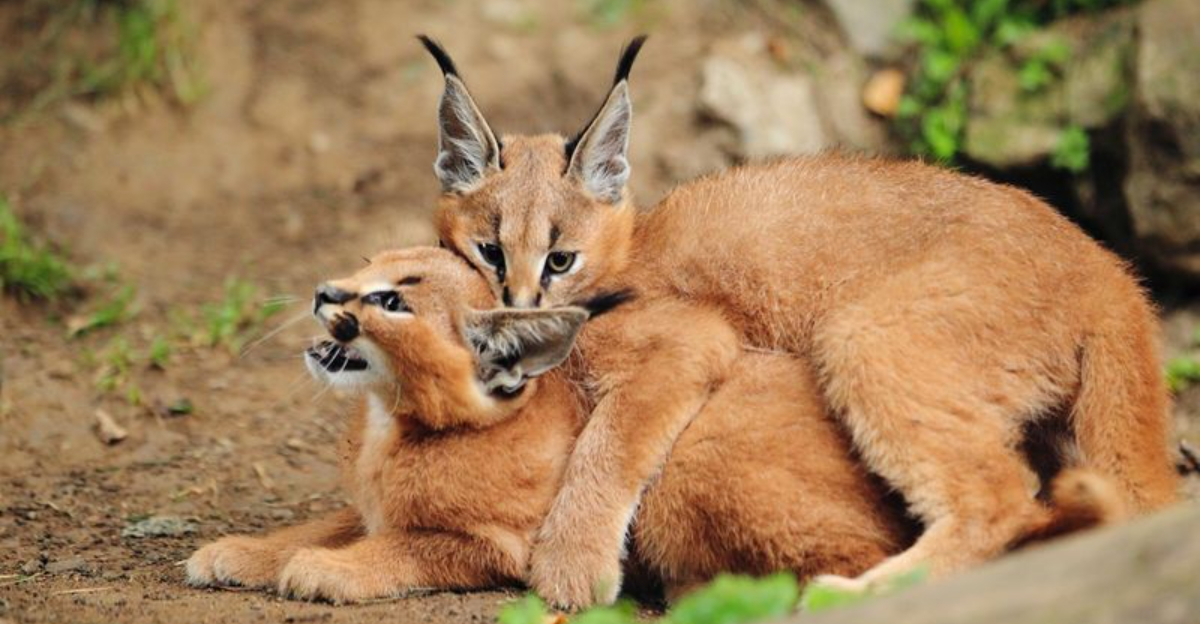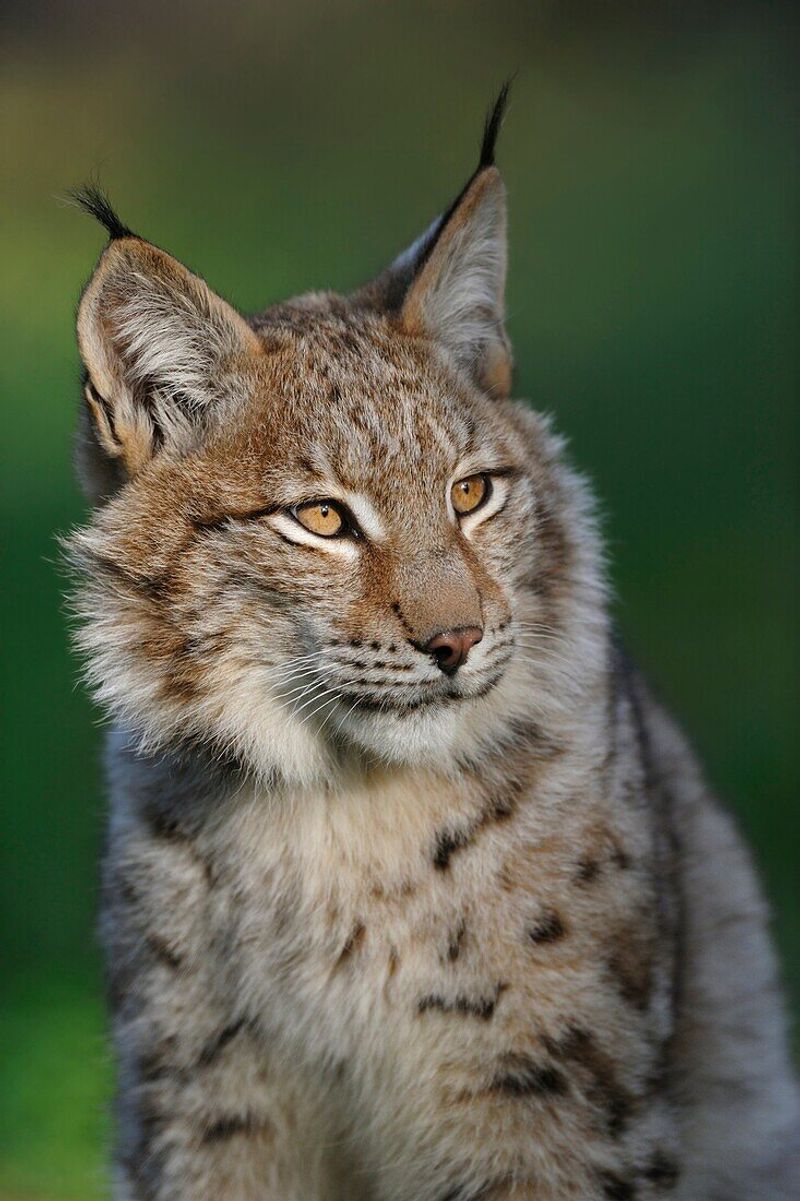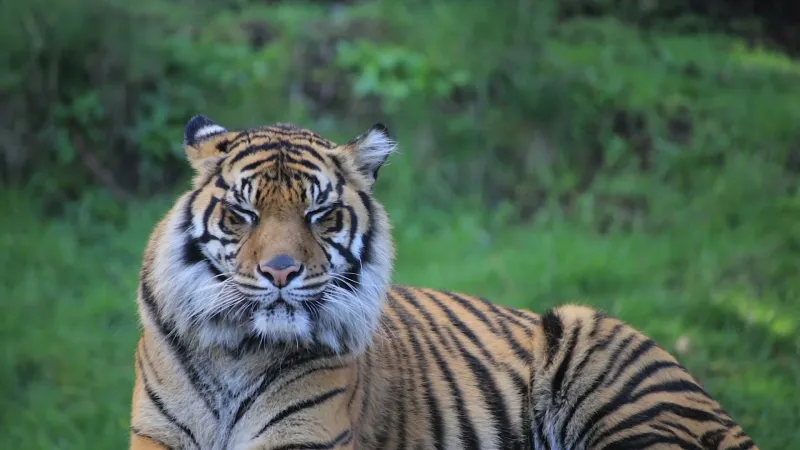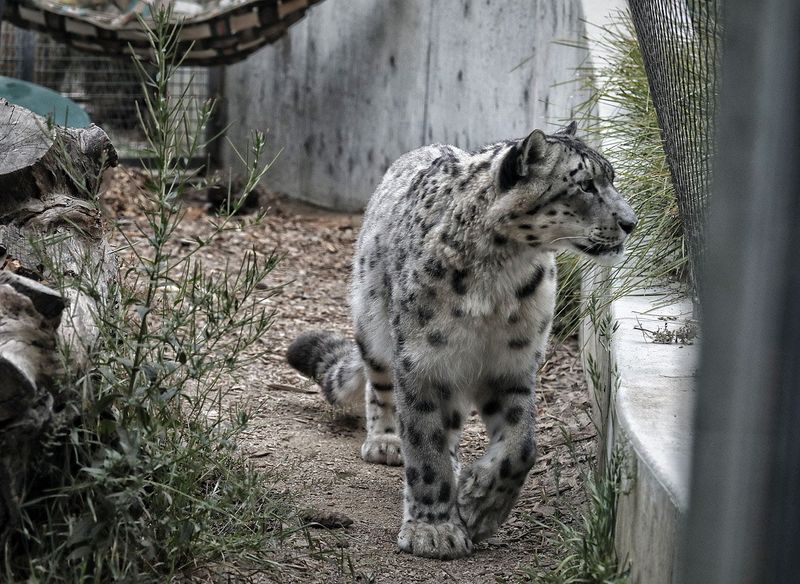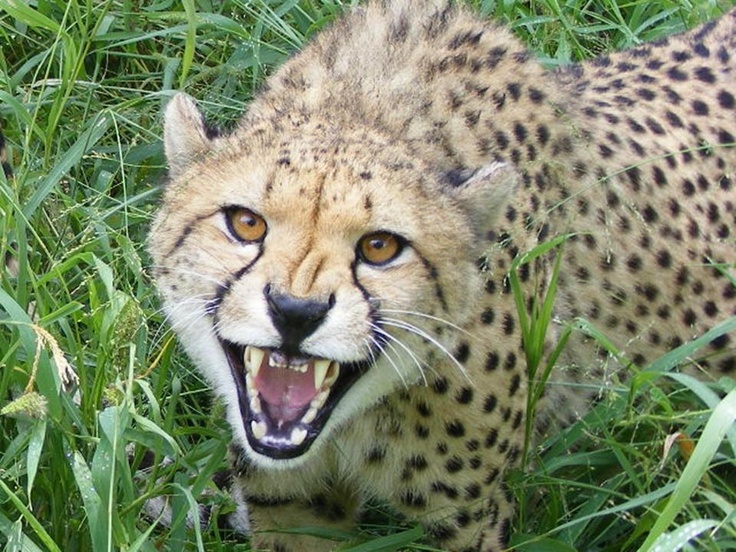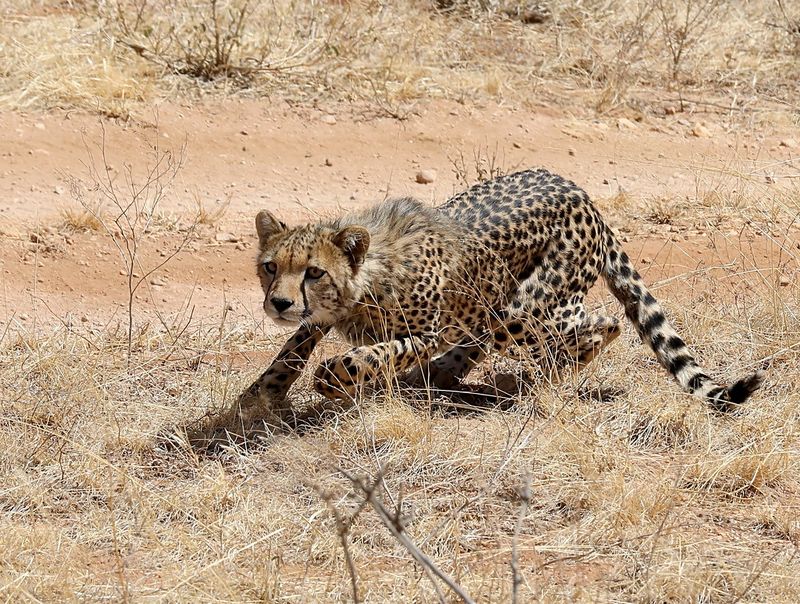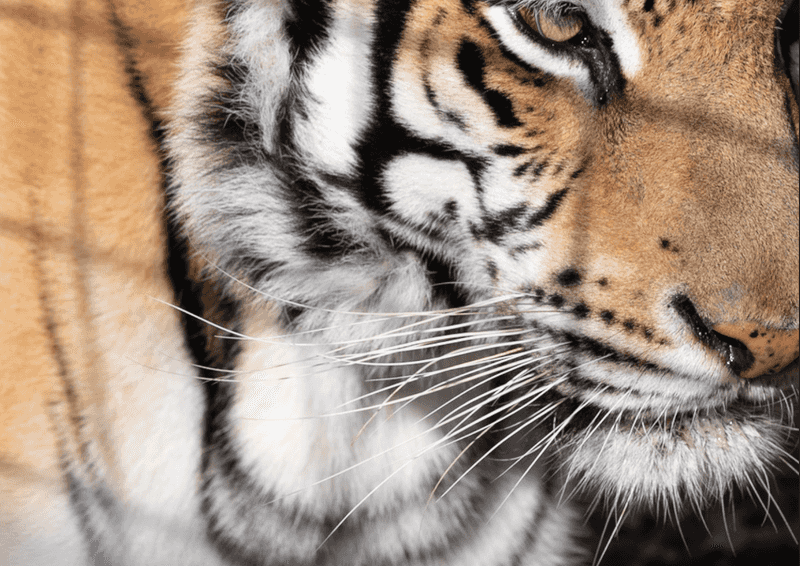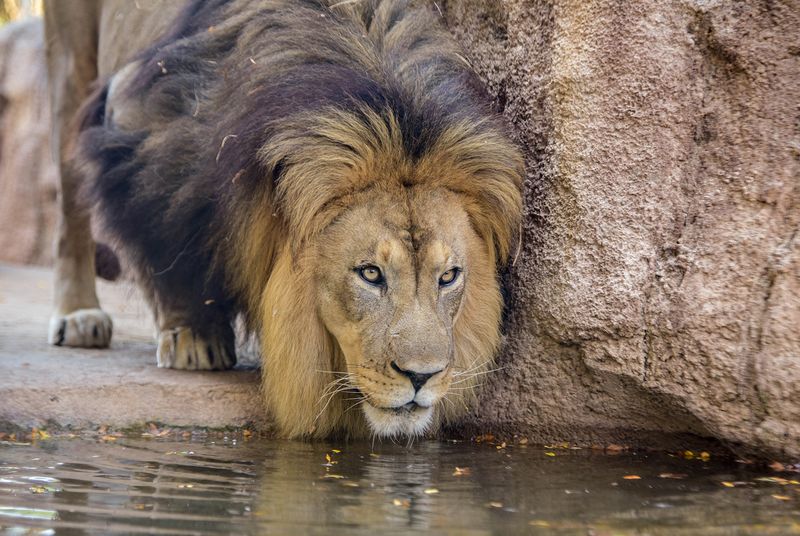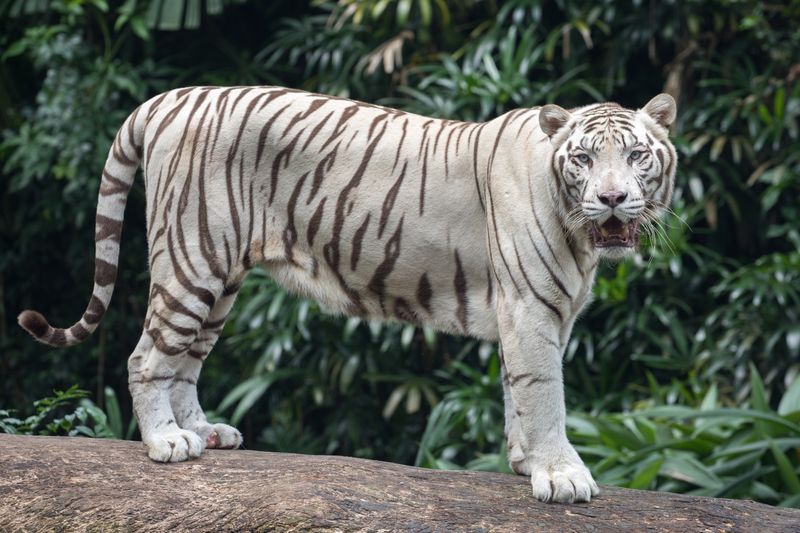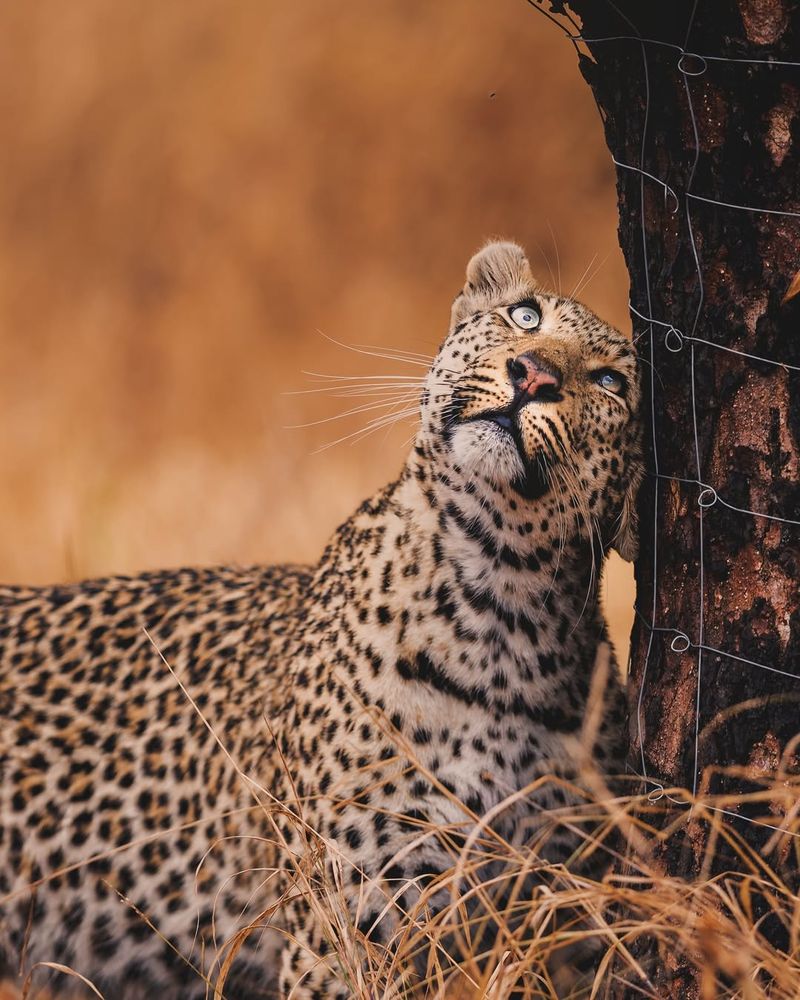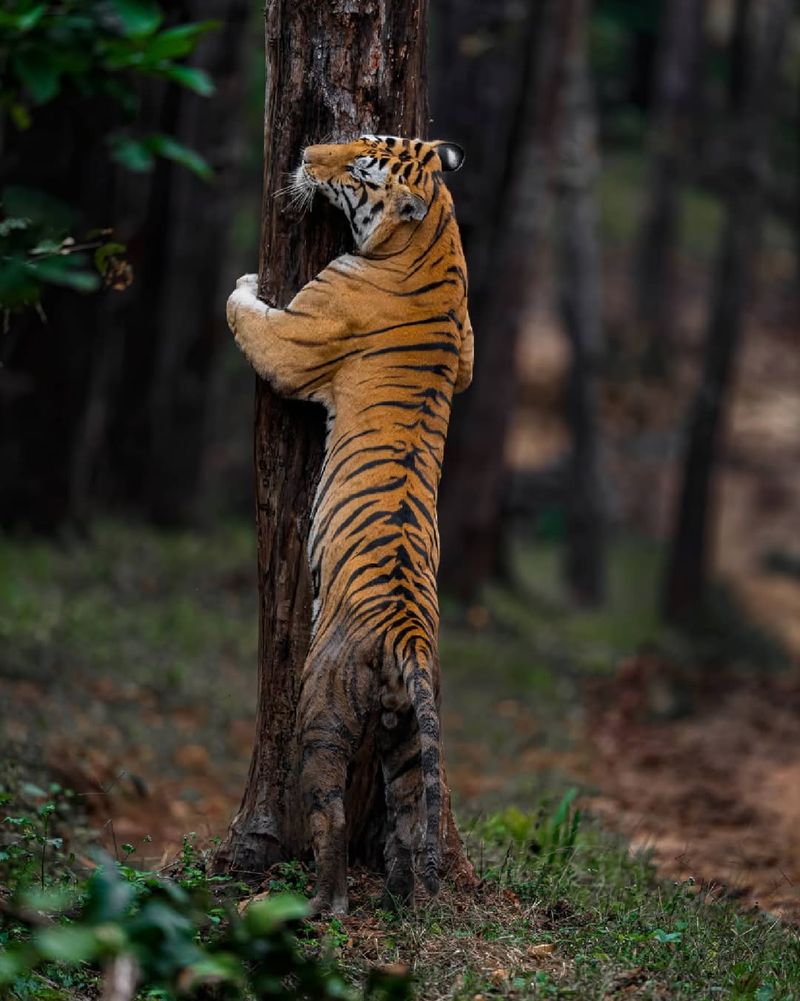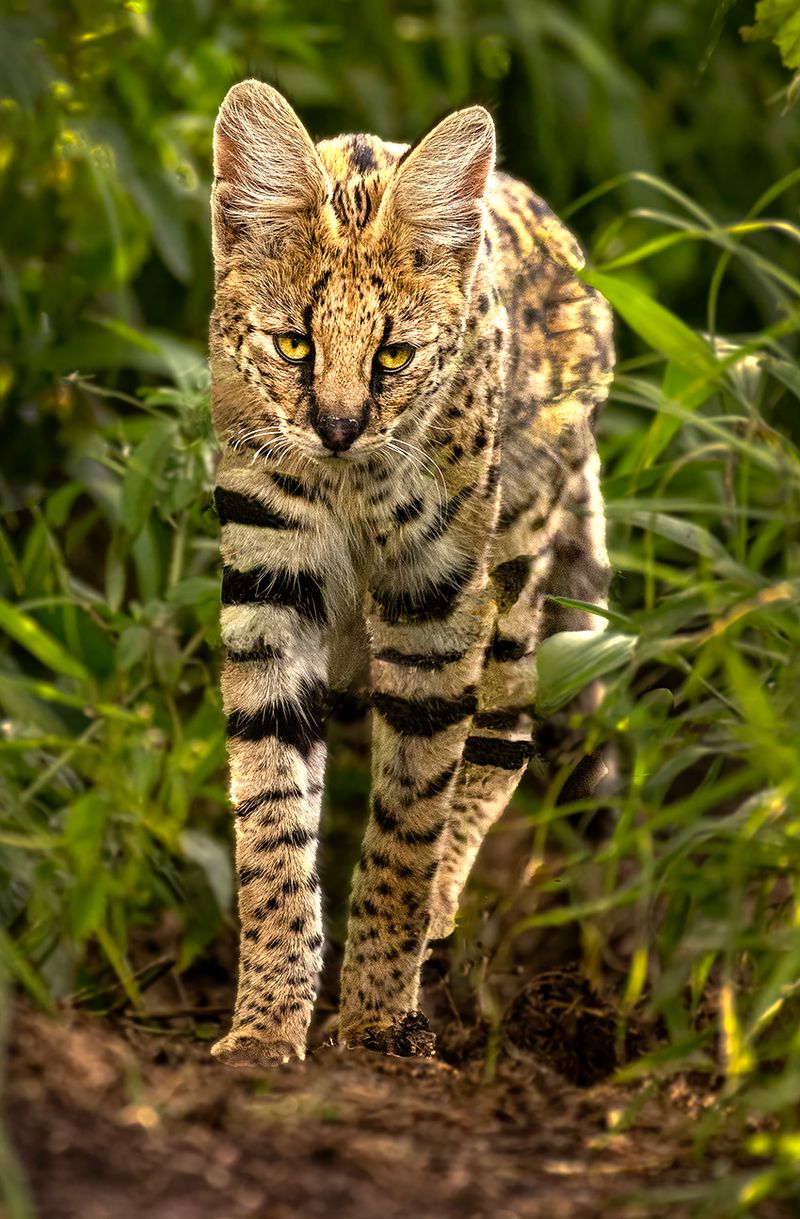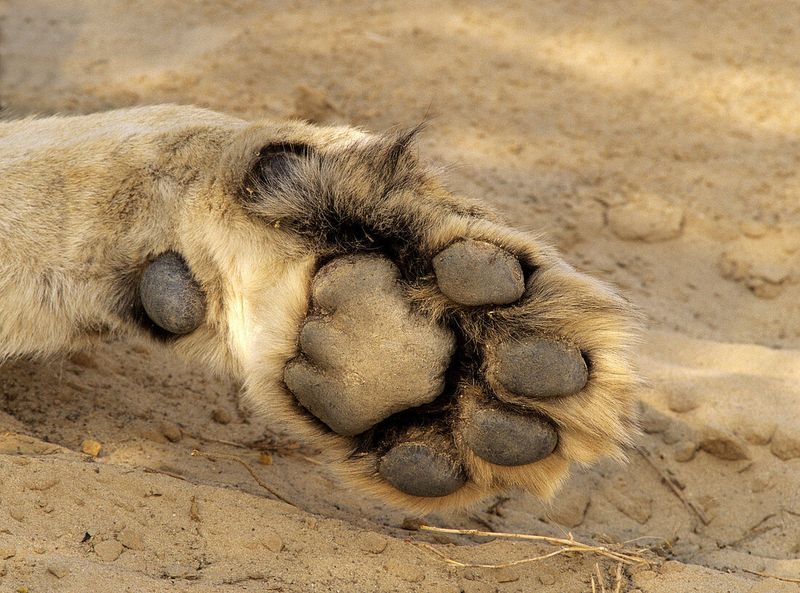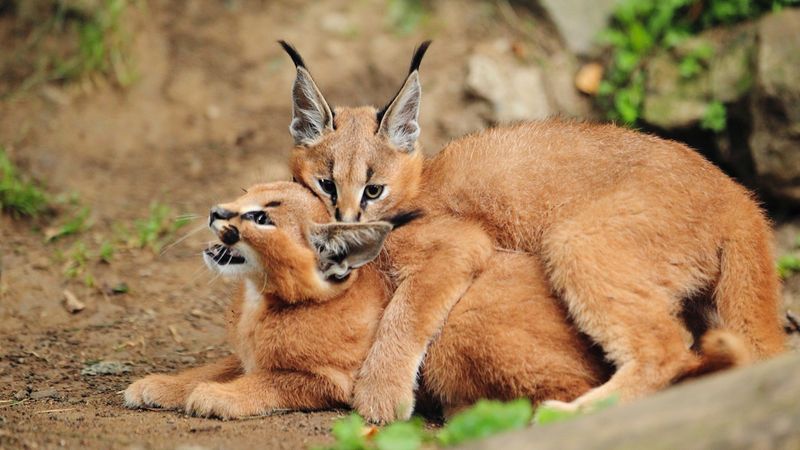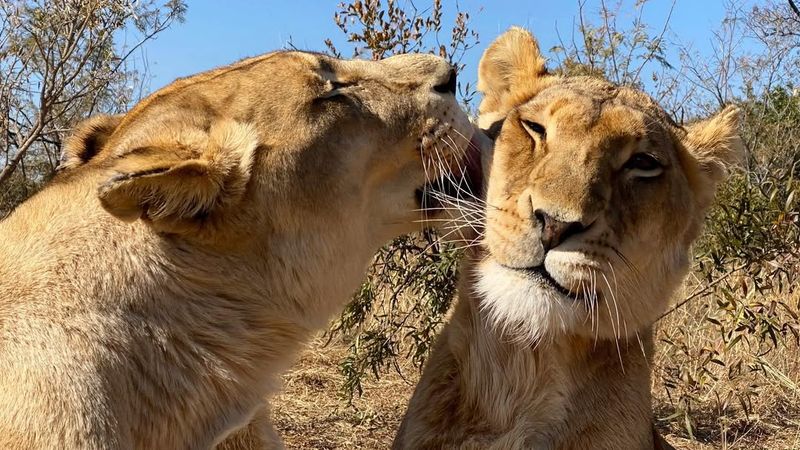📖 Table of Content:
Rather than using constant vocalizations, big cats convey messages through body language, facial expressions, and scent markings. A flick of the tail, a lowered head, or a slow blink can speak volumes in their social interactions. These subtle cues help them navigate complex relationships, whether among pride members or solitary rivals.
Beyond their physical gestures, big cats use scent to leave behind messages that linger long after they’ve moved on. Rubbing against trees, clawing bark, or spraying urine allows them to establish dominance and mark boundaries. Other cats passing through the area can interpret these signals, deciding whether to challenge the resident or steer clear. This method of silent messaging reduces unnecessary confrontations, ensuring a balance between competition and coexistence in the wild.
Understanding these intricate signals provides valuable insight into the world of big cats, showcasing their intelligence and adaptability. By mastering non-verbal communication, they maintain order within social groups and avoid unnecessary conflicts. Every movement and marking plays a role in their survival, from reinforcing social bonds to deterring intruders. Their ability to “speak” without making a sound underscores the sophistication of their behavior and their deep connection to their environment.
1. Tail Talk
A big cat’s tail is like a mood ring—constantly shifting to express emotion. A slow, relaxed sway often means the cat is at ease, simply enjoying its surroundings. On the other hand, a sharply flicking tail is a clear warning that irritation is building. During a hunt, a tiger’s tail might twitch slightly, a sign of focused concentration. When playfully interacting, cubs may chase and bat at each other’s tails as a form of social engagement. If a tail suddenly stiffens or lashes aggressively, it’s often followed by an attack. Observing tail movements can reveal a cat’s emotional state long before it makes a move.
2. Ear Signals
Ears are a big cat’s built-in antennae, constantly shifting to pick up sounds and signal mood. Forward-facing ears indicate curiosity or alertness, often seen when a leopard is stalking prey. If the ears swivel sideways, it suggests mild irritation or caution. When pinned flat against the head, it’s a glaring red flag that the cat is feeling threatened or angry. During play, cubs flick their ears back and forth to practice social cues. A lion in a pride meeting might slightly tilt its ears back to show submission without making direct eye contact. Ears serve as a quick and efficient communication tool, broadcasting a cat’s intentions in an instant.
3. The Slow Blink
Blinking isn’t just about keeping the eyes moist—it’s a secret signal in the feline world. A slow, deliberate blink from a big cat is a sign of trust and relaxation. When lions in a pride interact peacefully, they may blink at each other to show they mean no harm. Tigers, often solitary, use slow blinks to signal calmness when encountering another tiger in neutral territory. In captivity, big cats have been observed slow-blinking at humans they feel comfortable around. This behavior mimics domestic cats, which use the same technique to communicate with their owners. If a big cat stares intensely without blinking, however, it’s a different message—one of dominance or impending aggression.
4. Raised Fur (Piloerection)
The art of looking bigger than you really are is a common defense mechanism in the animal kingdom, and big cats are no exception. When feeling threatened, a tiger or lion will raise the fur along its spine, making itself appear larger and more intimidating. This response is triggered by adrenaline and is often accompanied by an arched back and stiff posture. Piloerection is particularly useful during confrontations, where size can be a deciding factor in whether a fight occurs. Even young cubs instinctively fluff up when startled, mimicking their adult counterparts. Along with bared teeth and a steady gaze, this tactic is an unmistakable warning. If the opponent doesn’t back down, a physical clash may be inevitable.
5. Tooth Flashing
Flashing teeth is an unmistakable visual cue that carries a strong message. A big cat may curl its lips and expose its canines when feeling threatened or asserting dominance. This behavior, often mistaken for a snarl, is actually a warning sign meant to de-escalate conflict before it turns violent. When male lions compete for territory, a dominant lion may bare its teeth at a challenger as a first step before an actual fight breaks out. Tigers in captivity sometimes use tooth flashing to signal discomfort when approached too closely. In some cases, this display is accompanied by a low growl, reinforcing the warning. If the warning is ignored, a swipe or charge may quickly follow.
6. Crouch Mode
Lowering the body into a crouch serves multiple purposes in a big cat’s behavioral toolkit. While often associated with hunting, crouching is also a gesture of submission when interacting with a more dominant cat. A subordinate lion may lower itself slightly when approaching the alpha male, acknowledging its lower rank. In hunting mode, a crouching position keeps a tiger hidden in tall grass, minimizing movement and making it nearly invisible. Cubs practice crouching during play, refining their stalking techniques long before they ever hunt. A defensive crouch, however, is different—it’s a sign that the cat is prepared to pounce if provoked. This position is a crucial part of both survival and social structure in the wild.
7. Whisker Vibrations
When a big cat senses the presence of another creature, its whiskers vibrate slightly, picking up even the most subtle changes in the environment. This allows them to communicate awareness or caution without making a sound. The vibrational sensitivity of whiskers helps big cats gauge the mood and intentions of others in their vicinity. These slight movements convey messages about safety and alertness, forming a non-verbal language shared among their kind. As they interact, the angle and tension of their whiskers can indicate curiosity or aggression.
8. Head Bowing
Lowering the head is a subtle yet meaningful gesture in the big cat world. When approaching a dominant lion, a lower-ranking member of the pride might dip its head slightly as a sign of submission. This simple movement helps maintain social order and prevents unnecessary conflicts. In interactions between mother and cubs, head bowing can be a request for attention or affection. Tigers may lower their heads slightly when encountering another tiger in neutral territory to avoid provoking aggression. During bonding moments, lions may gently press their foreheads together, reinforcing social ties. While it may seem like a small gesture, head bowing carries significant weight in big cat communication.
9. Sideways Stance
Turning the body sideways is a power move in the big cat playbook. This posture, often combined with raised fur and an arched back, is designed to make the cat appear larger than it actually is. When a leopard encounters a threat, it may take this stance as a way of warning the intruder to back off. Lions facing off in a dominance dispute will sometimes shift sideways before engaging, assessing each other’s size and confidence. Cubs use a modified version of this stance during play fights, mimicking the intimidation tactics of adults. Tigers in confrontations with rivals may adopt this posture before deciding whether to fight or flee. The sideways stance is an evolutionary tactic that often prevents unnecessary battles by settling disputes with body language alone.
10. Scent-Rubbing
Marking territory isn’t just about scratching trees or spraying—big cats also use their own scent by rubbing against objects. Tigers and leopards press their faces and bodies against trees, rocks, and even other cats to leave behind pheromones from scent glands located around their cheeks and forehead. This behavior helps them claim their territory, signaling their presence to rivals without direct confrontation. In social species like lions, scent-rubbing strengthens bonds within the pride. A lion rubbing its face against another isn’t just being affectionate—it’s reinforcing a shared scent that unites the group. Sometimes, scent-rubbing can also be a way of familiarizing themselves with a new environment. Whether marking their domain or reinforcing social ties, this behavior is a crucial part of big cat communication.
11. Claw Marks on Trees
Scratching isn’t just for sharpening claws—it’s also a way for big cats to send a silent but powerful message. When a tiger rakes its claws down the bark of a tree, it leaves behind both visible marks and scent traces from glands in its paws. These claw marks serve as territorial warnings to other cats that may pass by. A deep, fresh scratch signals that a dominant cat is actively patrolling the area, while older, faded marks suggest an abandoned or shared zone. Unlike vocal roars, these markings remain long after the cat has moved on, serving as a lasting reminder of its presence. Leopards, who often rest in trees, may scratch their favorite spots as a way of staking their claim. Even young cubs instinctively practice scratching, mimicking the adults and preparing for future territorial battles.
12. Urine Spraying
A strong territorial statement, urine spraying is one of the most effective ways big cats declare ownership over an area. Both male and female big cats engage in this behavior, though males—especially tigers and leopards—are the most frequent sprayers. By releasing a powerful-smelling spray onto trees, rocks, and grass, a cat leaves behind a unique chemical signature that warns rivals to stay away. The scent can communicate a wealth of information, from the cat’s identity and age to its reproductive status. Other big cats passing through the area may sniff these scent marks and decide whether to challenge or avoid the territory. Unlike roaring, which fades quickly, urine markings linger for days, serving as a long-term warning system. For solitary species like tigers, this is a crucial method of avoiding unnecessary fights.
13. Paw Gestures
Big cats often use their paws to communicate silently, whether it involves a gentle pat or a more forceful swipe. These gestures can signal a range of messages from playful interaction to authoritative instruction. When interacting with their young, adult cats use gentle paw gestures to guide and teach, ensuring the cubs understand boundaries and behaviors essential for survival. The intricate dance of paw movements helps convey lessons and express affection without uttering a sound. In social settings, these gestures also establish and affirm hierarchies among the group.
14. Play-Fighting
Wrestling, swatting, and mock attacks may look like fun, but for big cats, play-fighting is serious business. Young cubs engage in playful battles as a way to develop essential survival skills, including hunting techniques and self-defense. These playful scuffles also help establish social hierarchy within a pride or litter. A cub that frequently “wins” in play fights may grow up to be a dominant individual. In adult lions, play-fighting serves to strengthen social bonds and reinforce cooperative behaviors needed for hunting. Tigers, even in adulthood, may engage in occasional mock fights to practice their combat skills. While the encounters may look intense, they’re usually non-lethal, with cats instinctively pulling their bites and swipes. Play-fighting ensures that by the time a big cat faces a real threat, it’s fully prepared.
15. Allogrooming (Mutual Grooming)
Licking and grooming aren’t just about hygiene—they’re an important way big cats build social bonds. Lions in a pride frequently groom each other, reinforcing relationships and maintaining harmony within the group. Cubs are often groomed by their mothers, which not only keeps them clean but also strengthens maternal bonds. Even dominant males participate in grooming sessions, though they often receive more than they give. Allogrooming helps reduce stress and prevents fights by promoting a sense of unity. In leopards and tigers, which are more solitary, mutual grooming is rare but may occur between a mother and her young. The act of licking also spreads scent, further reinforcing group identity. In the wild, allogrooming is a sign of trust and belonging.
